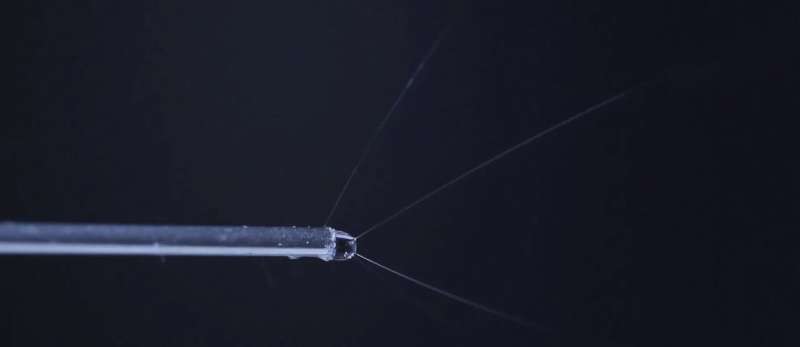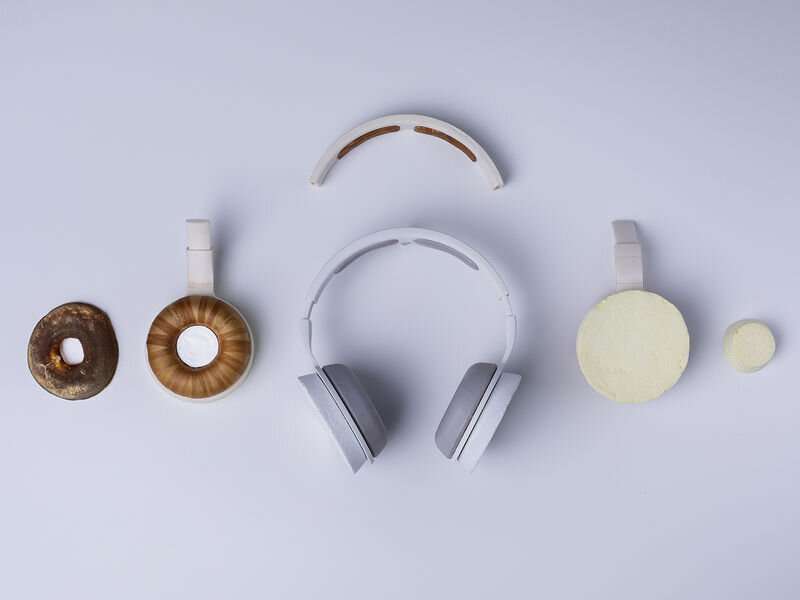Spider silk is created by adding spider DNA to microbes

Did you know that female spiders can weave seven different types of silk? And that, by mimicking spiders, humans have learned to make a silken material that is almost as strong as spiderweb?
Spiders weave different types of silk for different uses. They produce silks for hunting, for mobility and for cocooning their eggs. Spider silk consists of two different types of protein. These two constituent parts have differing properties, making spider silk both very strong as well as very flexible and elastic. Spider web is one of the toughest materials known—in other words, it is quite the wonder stuff.
Producing silk for human needs is especially interesting because of the material's excellent properties. Researchers are particularly interested in the silk that spiders use for mobility and to hang from. It is simultaneously especially strong, rigid, flexible and tough.
Spider genes not a mystery
The mimicking of spiders begins by getting familiarized with their genes, on which plenty of knowledge already exists. Researchers know which genes are responsible for spider web silk production, for example. Developments in biotechnology over the last 20–30 years have enabled scientists to embed specific genes in microbial cells. This turns the microbe into a producer of silk that resembles spider web. Microbes are simple, usually single-cell organisms such as bacteria, yeasts, molds and viruses.

Researchers acquired a gene optimized for their purposes directly from a company that specializes in their manufacture. The microbe used to produce the silk is a fungus called Trichoderma Reesei that has for some time been used by industry to, among other things, produce biofuels. The fungus, which decomposes wood in nature, does not cause illnesses, in addition to which it has another important property: once the cell finishes producing new material within itself, it pushes the substance out.
Once the gene is embedded in the cell, it only needs sugar to be activated. The gene needs to be added to just one cell, as cell division then provides researchers with more and more silk-producing cells.
The biology happens in water
Microbes produce the biosynthetic silk in a bioreactor, which contains sugar, amino acids and vitamins in addition to water. The end result is a light, fluffy substance from which the silk can be separated.
The process doesn't end with the work of the microbes, as the raw material still needs to be refined. Researchers manufacture a silken yarn or membrane utilizing high voltage to run the raw material through a long and narrow tube, causing the material to spray out of the end onto an aluminum-covered surface where it forms a membrane. The material is odorless and feels incredibly fine, soft and flexible between your fingers, like stroking a very soft, short-haired animal.
This recyclable biomaterial could be used to make clothes, surgical sutures and wound dressings as well as many other types of objects from phone covers to aircraft and car parts.
Provided by Aalto University





















